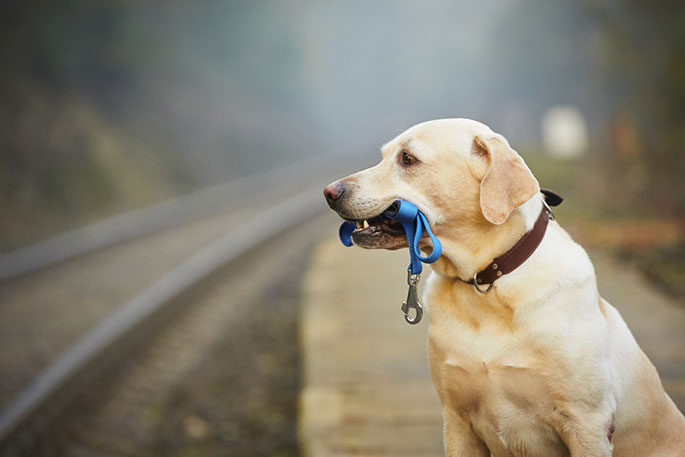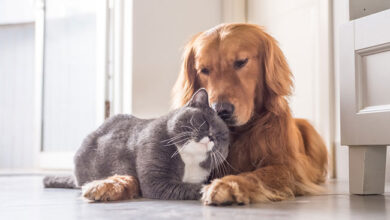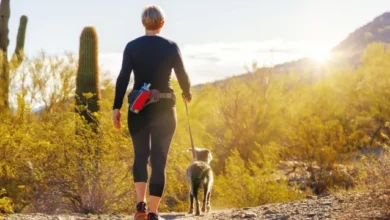
Losing a beloved pet can be a distressing and overwhelming experience. However, acting quickly and methodically can significantly increase the chances of reuniting with your lost dog. This guide provides detailed steps on how to track down a lost dog, ensuring you cover all bases and maximize your efforts.
1. Stay Calm and Act Quickly
Emotional Control:
- Why: Staying calm is crucial because panicking can waste valuable time and reduce your ability to think clearly and make rational decisions.
- How: Take deep breaths, gather your thoughts, and create a plan of action. Calmly enlist the help of family and friends.
Immediate Action:
- Why: The first few hours after a dog goes missing are critical for finding them, as they are likely to be nearby.
- How: Immediately start searching your neighborhood, calling out your dog’s name, and checking common hiding spots.
2. Search Your Immediate Area
Start Close to Home:
- Why: Dogs often hide or get trapped in unexpected places within or around the home.
- How: Thoroughly search every room, closet, garage, and the yard. Look under furniture and in any places your dog might hide.
Expand Outwards:
- Why: If your dog isn’t found at home, they may be wandering nearby.
- How: Walk or drive around the neighborhood, calling your dog’s name. Bring their favorite toy or treats to attract them. Ask neighbors if they’ve seen your dog.
3. Utilize Social Media and Online Resources
Post on Social Media:
- Why: Social media platforms can spread the word quickly to a wide audience.
- How: Post clear photos and descriptions of your dog on Facebook, Twitter, and Instagram. Include your contact information and any distinguishing features of your dog.
Local Groups:
- Why: Community groups have local members who can be on the lookout.
- How: Share your post in local community groups, neighborhood watch pages, and lost pet groups on social media.
Lost Pet Websites:
- Why: These websites have extensive networks that can help locate your dog.
- How: Register your lost dog on websites like Petfinder, LostMyDoggie, and PawBoost. Provide detailed information and photos.
4. Create and Distribute Flyers
Make Effective Flyers:
- Why: Flyers can reach people who might not be online.
- How: Create flyers with a clear photo of your dog, their name, a brief description, your contact information, and any special instructions (e.g., “do not chase”).
Distribute Strategically:
- Why: Placing flyers in high-traffic areas increases the chances of someone spotting your dog.
- How: Post flyers in grocery stores, pet stores, vet clinics, community centers, and parks. Hand them out to people in the area.
5. Contact Local Authorities and Organizations
Animal Control and Shelters:
- Why: Your dog may have been picked up and taken to a shelter.
- How: Notify local animal control, shelters, and rescue organizations. Provide them with a description and photo of your dog and check in with them regularly.
Veterinary Clinics:
- Why: Vets might treat injured or stray dogs brought in by the public.
- How: Inform local vets about your lost dog. Provide photos and contact information in case someone brings your dog in.
Microchip Company:
- Why: A microchip can help identify your dog if found.
- How: If your dog is microchipped, contact the microchip company to report your dog as lost and update your contact information.
6. Use Technology and Gadgets
GPS Trackers:
- Why: GPS trackers can pinpoint your dog’s location in real-time.
- How: If your dog wears a GPS tracker, use the associated app or website to locate them.
Dog Tracking Apps:
- Why: These apps are designed to help find lost pets by alerting nearby users.
- How: Use apps like PetRescuers or Find My Pet to broadcast your lost dog’s information.
Security Cameras:
- Why: Cameras can capture footage of where your dog has been.
- How: Check home security footage and ask neighbors with cameras to review their footage for sightings of your dog.
7. Organize a Search Party
Gather Helpers:
- Why: More people searching increases the likelihood of finding your dog.
- How: Enlist friends, family, and neighbors to help search. Provide them with photos and descriptions of your dog.
Assign Areas:
- Why: Covering more ground methodically is more effective.
- How: Divide search areas among the group to ensure thorough coverage without overlap.
8. Stay Persistent and Positive
Regular Follow-Ups:
- Why: Shelters and vets might receive new information or new pets daily.
- How: Keep checking in with shelters, vet clinics, and animal control. Visit in person if possible, as descriptions can sometimes be misunderstood.
Revisit Search Areas:
- Why: Dogs can return to familiar places even after some time.
- How: Regularly revisit areas where your dog was last seen. Leave items with your scent, like a blanket, to attract your dog.
Stay Positive:
- Why: Dogs have been found days, weeks, or even months after going missing.
- How: Keep your spirits up and continue your efforts. Don’t lose hope, as persistence often pays off.
Additional Tips
Preventative Measures:
- Why: Prevention can save you from the ordeal of losing your dog again.
- How: Ensure your dog always wears a collar with an ID tag and consider microchipping your dog. Secure fences and doors to prevent escapes.
Safe Return:
- Why: Your dog might need medical attention after being lost.
- How: Once your dog is found, ensure they are checked by a vet, especially if they’ve been missing for an extended period.
Learn from the Experience:
- Why: Preventing future escapes will keep your dog safe.
- How: Take steps to prevent future escapes by securing your home and yard and training your dog on recall commands.
Conclusion
Finding a lost dog requires a combination of immediate action, community involvement, and persistence. By following these steps and utilizing all available resources, you can increase the likelihood of a happy reunion with your beloved pet. Stay hopeful and keep searching, as many dogs find their way back home with the right efforts in place.



